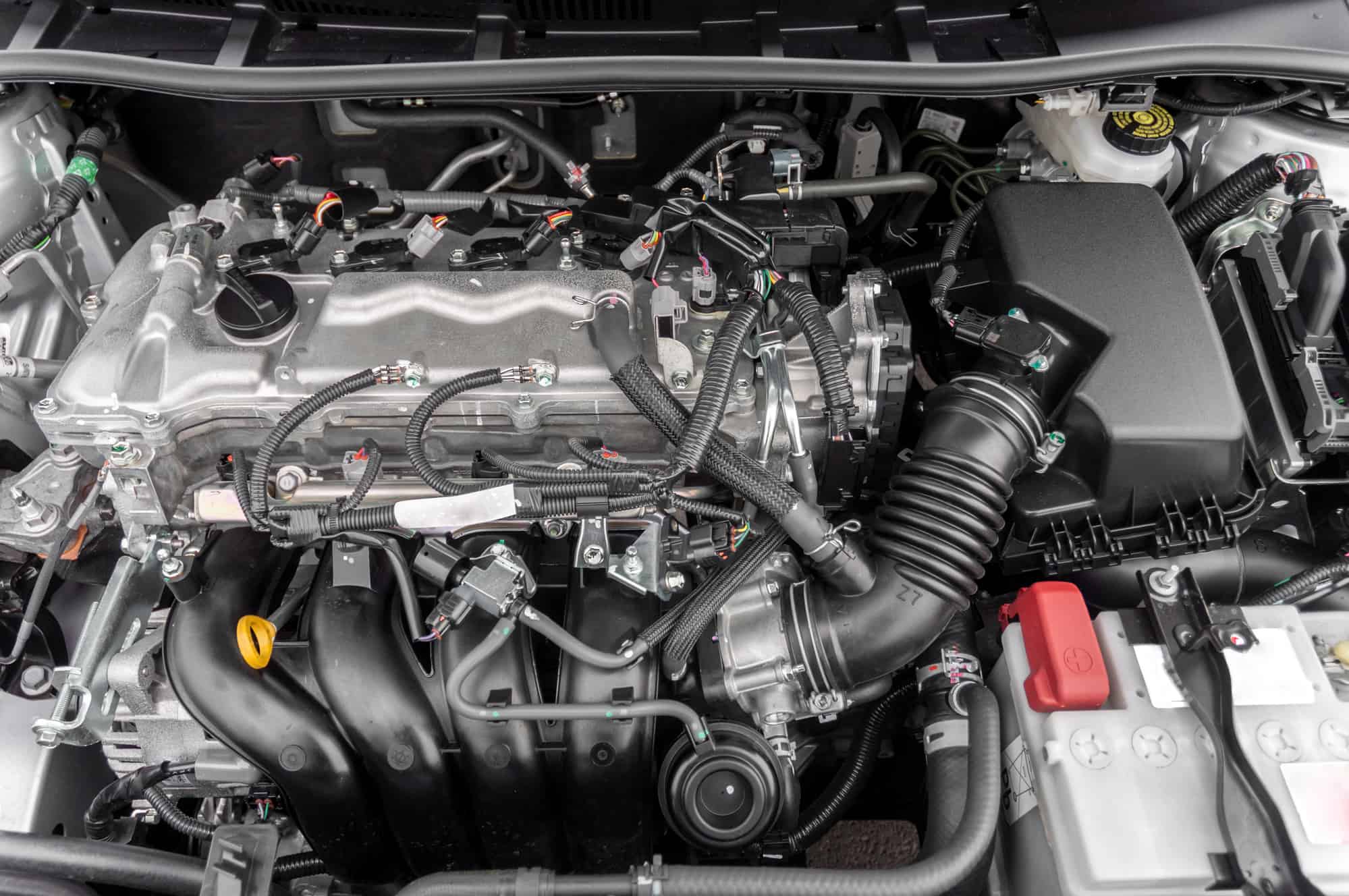If you’ve ever encountered the C0561 code flashing on your dashboard, signaling system disablement, you know the frustration it can bring. But fear not, as grasping the intricacies of this code and its resolution can pave the way for smoother rides ahead. From deciphering symptoms to unraveling the root causes, there’s a world of information waiting to be explored to guarantee your vehicle’s systems are back in top form. So, are you ready to reveal the secrets behind this code and get your car running seamlessly once more?
Key Points
- Symptoms include rough idle and ABS system disablement.
- Check EBCM, wheel speed sensors for issues.
- Ensure ECM functionality for peak engine performance.
- Address sensor health for overall vehicle performance.
- Use OBD-II scanner to clear ABS fault codes.
Symptoms of C0561 Code
If you’re experiencing the C0561 code, you may notice symptoms like rough idle issues. This code indicates that the ABS system, specifically the brake control module, is disabled.
The rough idle problems could be a result of the ABS system being affected by the C0561 code. It’s important to address this issue promptly to guarantee the proper functioning of your vehicle’s braking system.
When the brake control module is compromised, it can lead to performance issues like rough idling. By understanding the symptoms associated with the C0561 code, such as rough idle, you can take the necessary steps to troubleshoot and resolve the problem effectively.
Remember that the brake control module plays a critical role in the ABS system, so addressing any issues related to this component is essential for maintaining the overall performance and safety of your vehicle.
Common Causes of System Disablement
System disablement in vehicles can be attributed to various common causes, such as issues with the electronic brake control module (EBCM). One frequent culprit behind system disablement is the wheel speed sensor. The wheel speed sensor plays an important role in providing data to the EBCM for functions like traction control and ABS.
If the wheel speed sensor malfunctions or fails, it can lead to inaccurate data being sent to the EBCM, triggering the system disablement and the C0561 code. Hence, when troubleshooting system disablement issues, checking the integrity of the wheel speed sensor and its signals is vital.
Make sure that the wheel speed sensor is properly connected, free of debris, and functioning correctly to prevent system disablement related to this component. By addressing potential wheel speed sensor issues promptly, you can help resolve system disablement problems and restore the functionality of critical safety systems in your vehicle.
Understanding Electronic Control Module (ECM)
The Electronic Control Module (ECM) plays an essential role within a vehicle’s engine management system. In a Chevy Silverado, the ECM is responsible for controlling functions like fuel injection, ignition timing, and emissions control. It receives data from various sensors in the vehicle, enabling it to make real-time adjustments for peak performance. By monitoring and regulating the engine’s operation, the ECM ensures efficiency and reliability.
Understanding the ECM’s functions is vital for diagnosing and resolving engine-related issues effectively. Whether it’s adjusting fuel delivery or managing emissions, the ECM in a Chevy Silverado is at the heart of ensuring your engine runs smoothly. Being aware of how the ECM operates can help you appreciate its importance in maintaining your vehicle’s performance.
Next, let’s explore the significance of keeping the sensors in good health to support the ECM’s functionality.
Importance of Sensor Health
Proper maintenance of sensors is essential for ensuring accurate data transmission and peak vehicle system functionality. Sensor health plays a critical role in the overall performance of your vehicle. Faulty sensors can disrupt the flow of information, leading to system malfunctions such as the Electronic Parking Brake (EPB) being disabled.
Regularly monitoring and servicing sensors is key to preventing issues like signal dropouts that can compromise safety features like the EPB. When sensor signals become erratic, it not only affects the EPB but also impacts other safety systems, jeopardizing overall vehicle functionality. By prioritizing sensor health and promptly replacing any compromised sensors, you can uphold peak system performance and safety standards.
Diagnostic Steps for C0561 Code
Guarantee precise data transmission and peak vehicle functionality by taking diagnostic steps for the C0561 code using a scan tool. Begin by conducting a system diagnostic procedure with the scan tool to pinpoint the root cause of the issue.
Check for burnt traction control or ABS fuses as part of the troubleshooting process, as these can sometimes trigger the C0561 code. Inspect the brake system for leaks and confirm proper fluid levels to eliminate any potential hydraulic issues.
Thoroughly examine the wiring and connectors of the Electronic Brake Control Module (EBCM) for any signs of damage or corrosion that could be leading to the fault. Before considering a replacement for the EBCM, verify its functionality to determine if reprogramming or repair could resolve the C0561 code.
Following these diagnostic steps diligently will aid in efficiently resolving the system disabled error and restoring peak vehicle performance.
Clearing ABS Fault Codes
How can you effectively clear ABS fault codes to address system disabled information related to C0561?
Clearing ABS fault codes is essential in resolving system integrity issues linked to the C0561 trouble code. To clear these codes, you’ll need an OBD-II scanner that’s capable of accessing ABS systems.
Begin by connecting the scanner to the OBD port of your vehicle. Follow the on-screen prompts to access the ABS module and navigate to the option for clearing fault codes. Select this option to erase the stored ABS fault codes from the system’s memory.
Once the fault codes are cleared, you can recheck for any remaining codes and perform a test drive to verify that the ABS system functions properly. By clearing ABS fault codes promptly, you can prevent further system disablement and ensure the safety and functionality of your vehicle’s ABS system.
Resolving EPB Malfunction
To address EPB malfunction related to the C0561 trouble code, evaluate rear wheel speed sensor signals for irregularities that may impact system functionality. Monitoring these signals through data analysis can help pinpoint any issues causing the EPB malfunction.
If erratic signals are detected, it’s advisable to contemplate replacing faulty wheel bearings to restore signal integrity. By resolving signal irregularities, you can effectively tackle the EPB malfunction triggered by the C0561 trouble code.
Then, diagnosing and clearing fault codes associated with the C0561 code can enable the EPB to operate correctly. Remember, addressing the root cause of the rear wheel speed sensor problems is essential for ensuring the EPB functions smoothly.
Ensuring System Efficiency and Safety
By ensuring regular maintenance and monitoring of sensor signals, you can enhance the efficiency and safety of your system. Clearing fault codes promptly can help restore system functionality and safety.
Monitoring sensor signals is vital as it helps identify issues that may affect the system’s operation. Timely maintenance of components plays a significant role in ensuring efficient system performance.
Addressing any signal irregularities promptly is key to preventing system disablement. Providing feedback to customers about potential system issues promotes awareness and enables timely resolution of problems.
How does the C0561 code relate to ECU performance issues and diagnosis?
The C0561 code can indicate ECU performance issues diagnosis. When this code appears, it often points to problems with the electronic control unit’s functionality. Proper diagnosis and troubleshooting are essential to pinpoint the root cause of the issue and ensure the ECU operates as intended.
Impact of Rear Wheel Speed Sensors
Rear wheel speed sensor signals play a vital role in the functionality of the Electronic Parking Brake (EPB). These signals are essential for electronic brake control, as they help the system determine the speed of each wheel. Erratic signals from the rear wheel speed sensors can lead to the EPB being disabled, compromising the vehicle’s safety.
Signal irregularities detected in rear wheel speed sensor data can trigger malfunctions in the EPB, affecting its operation. Faulty wheel bearings are a common culprit behind rear wheel speed sensor signal dropouts, further impacting the EPB’s functionality.
Monitoring and addressing rear wheel speed sensor issues is essential for maintaining proper EPB functionality and ensuring vehicle safety. By keeping these sensors in good condition and promptly addressing any irregularities, you can help prevent potential EPB malfunctions and maintain control over your vehicle’s electronic brake system.
Preventing Future System Disablement
Regularly checking and maintaining wheel speed sensors is essential to preventing future system disablement. Making sure these sensors are free from debris buildup, corrosion, or damage can help avoid erratic signals that may trigger the system to disable. Addressing ABS fault codes promptly is vital for preventing system disablement next time. Ignoring fault codes can lead to more significant issues that may render the system inoperable.
Then, timely replacement of faulty components like wheel bearings can play an important role in preventing system disablement from occurring. By clearing fault codes and conducting diagnostic checks regularly, you can proactively identify and address potential problems before they escalate and disable the system. Educating yourself on common causes of system disablement will empower you to take the necessary preventive measures to ensure the system functions at its best.
Stay vigilant and proactive to prevent system disablement in the future.
As an Amazon Associate we earn from qualifying purchases.










